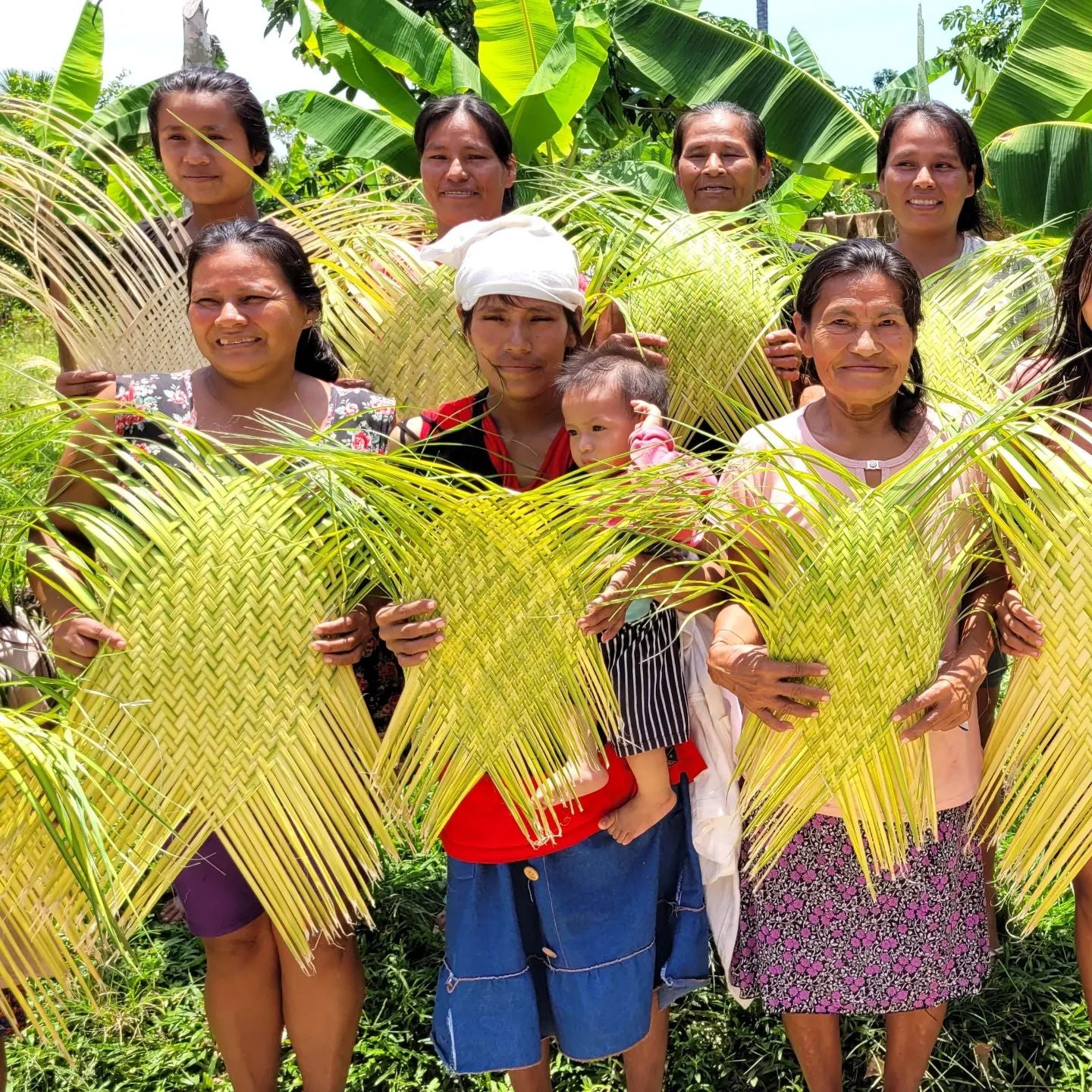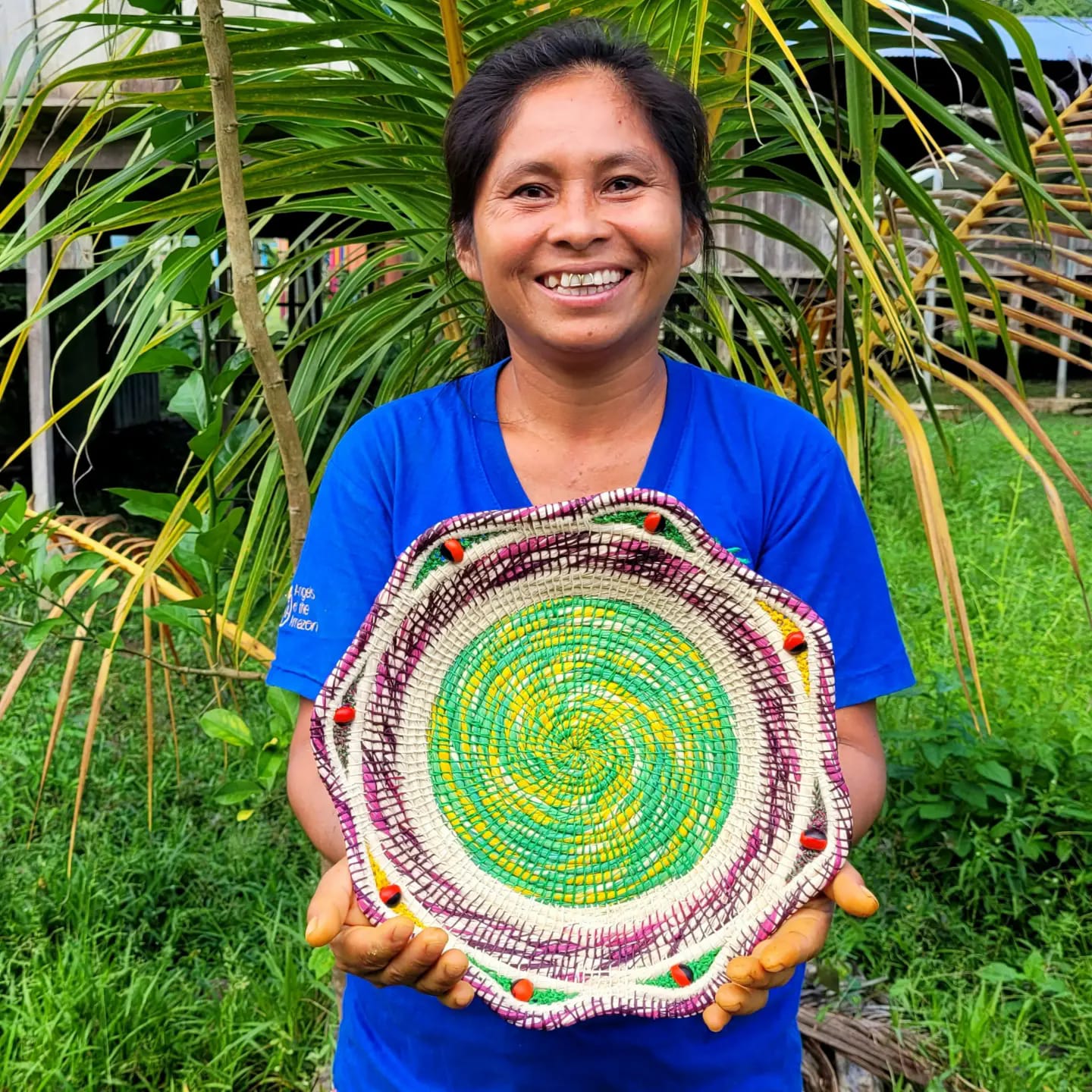by Campbell Plowden






October 20, 2022
After meeting with the artisans in Chino, we motored down the Tahuayo River to the community of Esperanza. They used to send thousands of baskets to the US. Conditions had radically changed, however, and they now only sell a modest amount to boutiques in Lima. Our Garza Viva manager Andrea arranged our visit to see if they were interested in learning to make some new crafts with us.

We arrived around sunset and met the artisans in a large well-lit open community room. We took turns sharing the background and current situation of our respective groups and reviewed each other’s crafts. Their baskets were simple, elegant and high quality. We bought a few, ordered some others, and I took the best pictures I could under the artificial light.

The group was very enthusiastic about wanting to learn to make woven birds and butterflies with us. It would be great to work with an artisan group that already had years of experience working with an exacting wholesale buyer.
The next morning, we went on to the community of Santa Cruz. We walked up a forested hill to get to the village and saw interlaced strips of green and blond chambira laying all around in the sun to dry. We gathered in the artisan leader’s house and watched artisans of all ages efficiently making fans. They were the undoubtedly the best fans available in the area which I had sold well at music festivals this summer.


I could easily sell more, but there are two big problems with this product. It takes all of the leaflets from one chambira leaf spear (a “cogollo”) to make one fan, and the artisans can get no more than $1.50 selling these fans. This means this artisan group is using huge amounts of chambira to make fans and earning very little for their efforts.

They were amazed to see our woven birds, and the advantages of making them were obvious. One cogollo could yield 10 to 20 ornaments which could increase its value to as much as $150. We stressed that learning to making high quality birds would require a lot of time and patience, but they were eager to learn.





